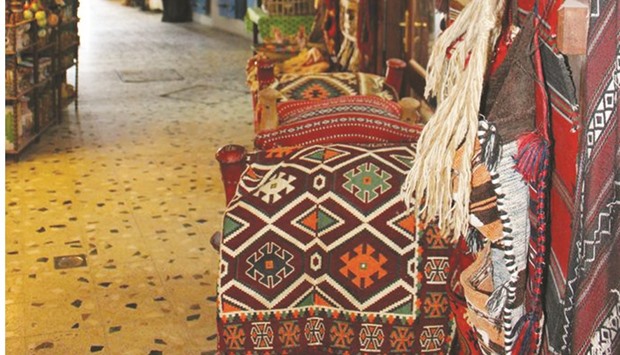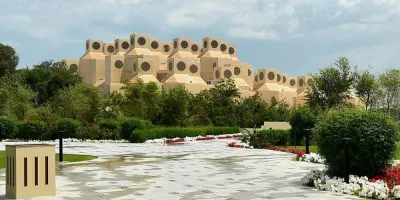The concept of “creative economy” has drawn much attention in recent times, but what is it? Cultural industries which make up the creative economy can include design, music, crafts, film and television, fashion, publishing, heritage, festivals and a range of other traditional and modern arts and crafts and cultural activities which generate income and create employment.
The creative economy has come to be recognised as a key driver of economic growth, diversification and even social change across the globe.
The concept of creativity is not new and neither is economics, but what is new is our understanding of the nature and the extent of the relationships between them and how they can be combined to create extraordinary value and wealth.
Beyond the obvious examples of creative entrepreneurship with global reach, we can also highlight the range and diversity of opportunity within the creative sector on a smaller scale and its potential for small to medium enterprises and entrepreneurs. The Creative Economy Report co-published by Unesco and UNDP in 2013 brings to life cases and trends, and opportunities and challenges of creative economy on the ground.
Many stories can be told from the Arab region demonstrating the relation between creativity and economics. The turn to a modern lifestyle triggered a decline in traditional creative and artistic activities. Local weavers and other craftsmen became destitute because of a sharp contraction of the market for their traditional products. But by designing new products and updating their techniques, in many cases they managed to revive textile production, build up enterprises, and attract customers from all over the world through distinctive and unique new products.
Investing in creativity through education and encouraging creativity is being recognised as an engine of future economic growth and diversification. Astonishing figures are presented by the United Nations through their development programmes. Figures published by Unctad in 2010 show that world trade in creative goods and services brought in a record $624bn in 2011 and that it more than doubled from 2002 to 2011. During that period, the average annual growth rate was 8.8%.
Even more interestingly, the Creative Economy Report by Unesco and UNDP reported growth in developing-country exports of creative goods was stronger, averaging 12.1% annually for the same period. Not only has the creative economy been growing at a faster pace than the rest of the economy in a number of countries, but it was also not affected by the economic crisis in 2008.
Nevertheless, what makes this economy different is its contribution in additional non-monetary values and its strong potential to instil social change.
The social impact of the industry goes beyond job creation as it promotes overall creativity of societies, improving quality of life and well-being. These additional outcomes have a focus on developing and strengthening social capital that lead to stability and social progress. At the same time there is a strong link between cultural identity and production of local handicraft goods as identified by the Unesco Convention on the Protection and Promotion of the Diversity of Cultural Expressions that supports governments in investing, and protecting their creative and cultural industries. In countries across the region, Al Sadu weaving is a craft industry that is being reinvigorated to educate youth about the textile heritage from the nomadic weaving of the desert through to the urban weaving of the town, and connect them to their past. Creative initiatives have taken the form of social enterprises contributing to social issues through the creation of women craft associations and youth exchange programmes in the region.
Unesco is collaborating with governments and non-governmental organisations throughout the GCC and in Yemen to promote the protection of traditional knowledge and skills in the creative economy as potential areas of growth and economic diversification. In Qatar, Unesco works closely with a range of stakeholders in the culture sector, including the present co-operation with Katara Cultural Village Foundation to enable culture as a resource that provides innovative and cross-cutting solutions to complex issues.
* Next Tuesday, Indrasen Vencatachellum, a senior expert in the domain of culture & development will be writing on the dual role of crafts in the creative industries and the cultural heritage sectors.
* The Unesco Doha Office covers all six independent Gulf Co-operation Council (GCC) countries, as well as the Republic of Yemen. The office established in 1976, was generously hosted by the State of Qatar. In line with the organisation’s global priorities and five major programmes, the vision of the Unesco Doha Office is to empower women and men in the region – in particular the youth – with the capacity to contribute to their own sustainable human development through the fields of education, science, culture, communication and information in close partnership with member states, the private sector and civil society.
Intercultural dialogue and cultural diversity programme
The Intercultural Dialogue and Cultural Diversity Programme is the outcome of the co-operation established between Unesco Doha Office, Katara Cultural Village Foundation and Qatar National Commission for Unesco with the aim to promote cultural diversity and cross-cultural understanding and awareness.
The programme was launched on 10 January 2016 with the Cultural Diversity Festival that brought together performing groups from 21 countries representing different regions of the world and celebrating cultural pluralism in Qatar. It will come to its closure with an expert conference on Promoting Dialogue and Diversity through Cultural Industries that will be held between the 6 and 8 of December in Doha.
This mini article series is sharing selected contributions of Qatari and international experts from the conference with the wider public and aims to raise awareness around the social, cultural and economic impact of traditional handicraft practices.

The Handicraft Centre in Souq Waqif.


